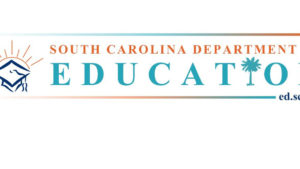
By Gregg Bragg, special to Statehouse Report | South Carolina educators and administrators are struggling to engage students while developing effective solutions for teaching during the COVID-19 pandemic.
“We need to have our teachers directing virtual classes or face-to-face, but not both, and only one topic at a time,” said Sherry East, president of the S.C. Education Association.
Teachers with whom she has spoken agreed.
A Beaufort teacher, for example, wrote the state needed to reconcile the self-paced learning of virtual programs with the needs of administrators to show classroom-style progress.
“I have students working at different sections within the curriculum,” the teacher wrote in the email, which was shared by East with Statehouse Report. “Now it’s time for grades and I am being told to put in zeros for missed assignments in order to reflect an accurate account of the student grade. I think that is unfair to the student.”
Another teacher from Lexington described the need for more structure inside the classroom and more infrastructure to help students.
“Our district is doing virtual OK,” the teacher wrote, “but access to WiFi isn’t a safe assumption. [There are] iPads that won’t hold a charge, charging cords that don’t work, login difficulties, passwords and usernames that are too complicated for little kids to enter, [and problems] getting kids the materials they need for lessons.”
What’s happening across South Carolina
The state Department of Education required South Carolina’s 81 school districts to teach using two models — face-to-face learning and virtual learning with online classes through Zoom and other platforms.
 “Pretty much every district, except for a handful, started off the school year offering both of those, though a few took a little longer to phase those in,” Ryan Brown, chief communications officer for the S.C. Department of Education, said in an interview this week.
“Pretty much every district, except for a handful, started off the school year offering both of those, though a few took a little longer to phase those in,” Ryan Brown, chief communications officer for the S.C. Department of Education, said in an interview this week.
Schools had plenty of wiggle room, he said.
But another model emerged, too, East said — a hybrid in which students have face-to-face learning in smaller classes for part of the week and virtual classes at other times.
“We’re all over the place,” she said. Class numbers are cut roughly in half, for example, and students alternate days of in person attendance with their classmates during the same scheduled time. The program facilitates socially-distanced learning and helps keep participants safe, but can divide an instructor’s attention.
What’s next
Developing an overarching solution out of the trial-and-error experiences of teachers has proven evasive, in part, because every solution is bad for someone. South Carolina’s embrace of self-rule is hard to dislodge, especially in school districts, Brown said.
“I think we’re trying to make school as normal as possible with the pandemic and the safety conditions that are in place,” he said. “I think everybody’s trying to do the best they can with the cards they’ve been dealt. People tend to believe that local communities know their own needs best, and that’s something [the state is] comfortable doing.”

East
East said she wanted a broader solution based on guidelines established by the Centers for Disease Control (CDC) and the state’s AccelerateED task force.
“But we haven’t been doing that,” she said. “We said teachers should not be teaching in person and virtual classes simultaneously, but we are. And when I asked about it, I was told there simply aren’t any teachers to hire.
“A lot of teachers just walked out, because they were forced to go back to the classroom and they didn’t want to be in the buildings. Whittaker Elementary in Orangeburg and Lexington High School have both closed after infections spiked beyond the limits set by the S.C. Department of Health and Environmental Control (DHEC),” said East, a fan of virtual learning.
Brown said teachers, to the greatest degree possible, were given a choice about returning to the classroom but stressed that local policy prevailed.
“What we’ve encouraged them [districts] to do is work with those teachers individually based on the recommendations from the CDC and DHEC, but I can’t say everyone was accommodated.”
Brown said the ideal solution for education during a pandemic was still a work in progress that the state will continue to tweak, regardless of the availability of a vaccine.
A teacher’s reflections
Greenville high school teacher Cliff Lee offered two paths forward in an interview with Statehouse Report.
“The first step to solve the problems with virtual learning [is] an acknowledgement from all educators and their leaders that virtual educational settings are distinct from traditional education and that it requires specialized skills,”he said. “The differences between these settings require special training for instructional and leadership practices. “
The second step, he said, was more honesty and transparency about decision-making with virtual learning.
“If an educational leader makes a decision that causes hardship for educators, those educators are owed an honest explanation of why and how the decision was made. The third step is to give the educators themselves as much support as possible. This includes items like adequate planning time, instructional autonomy, and a meaningful way to voice concerns and problems.”
East and Brown saw value in continuing to invest in virtual education.
“If we can get federal COVID money applied to buying devices and expanding WiFi in South Carolina, get past the backlog of ordering devices and solve some of the technology issues, it would definitely help elevate performance in our rural areas,”East said.
Gregg Bragg is a freelance reporter who lives on Johns Island.
"story" - Google News
November 21, 2020 at 12:09AM
https://ift.tt/2IT10Gj
BIG STORY: State struggles with education delivery models - Statehouse Report
"story" - Google News
https://ift.tt/2YrOfIK
https://ift.tt/2xwebYA
Bagikan Berita Ini















0 Response to "BIG STORY: State struggles with education delivery models - Statehouse Report"
Post a Comment